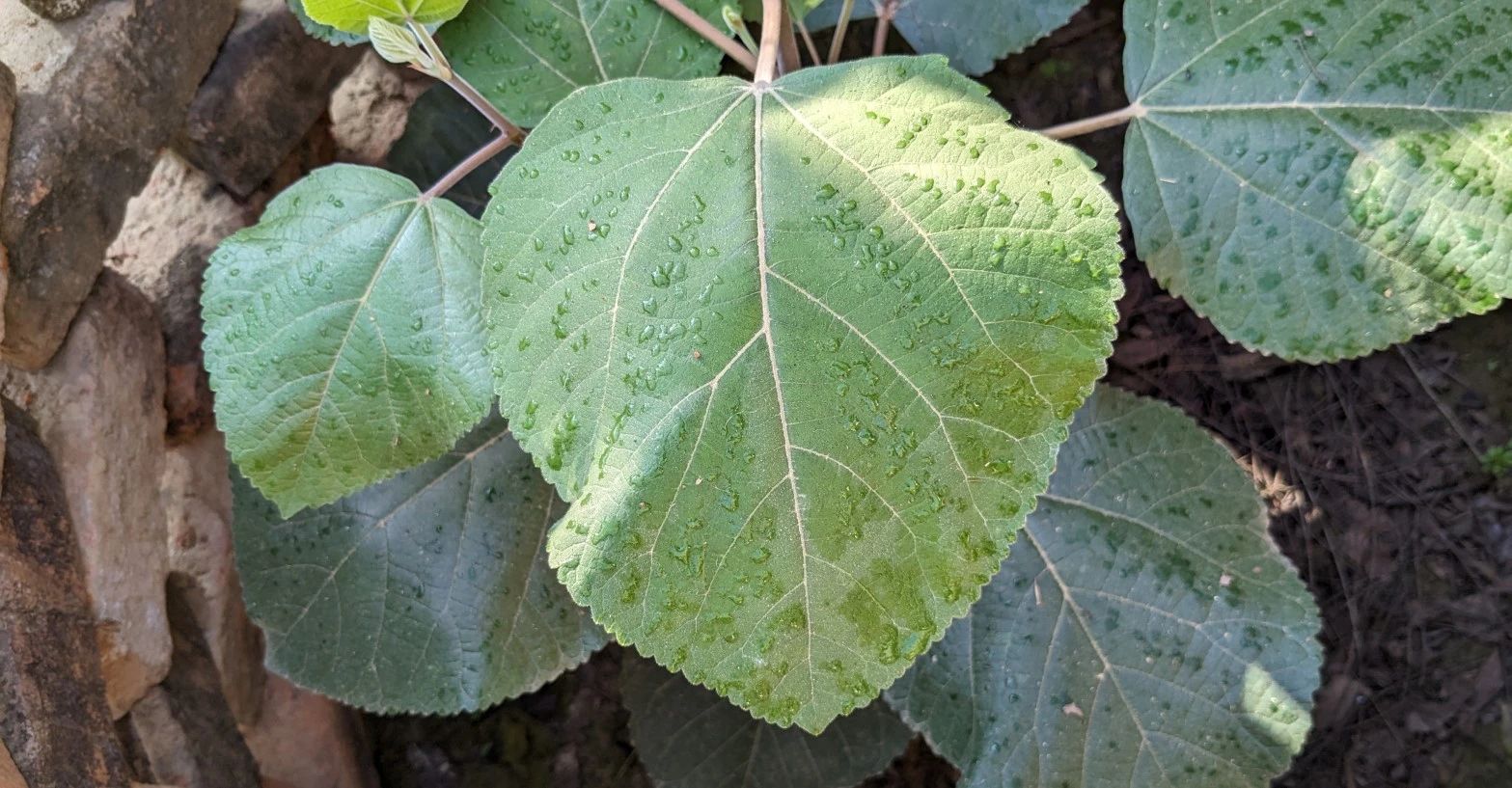Table of Contents
Introduction
Fig trees in India have a rich history dating back centuries and hold significant cultural, religious, and ecological importance. In India, these trees are not just a part of the landscape but also embedded in the country’s heritage. Their distribution across various regions adds to the diversity of India’s flora.
Types of Fig Trees Found in India
India is home to several types of fig trees, with some being more common than others. Among these are the Banyan fig, Peepal fig, and Cluster fig. Each species possesses unique characteristics, ranging from leaf shape to fruit size, contributing to the vibrant tapestry of India’s botanical diversity.
List of Fig Trees in India:
- Peepal Fig Tree or Sacred Fig: The Peepal Tree is sacred in various cultures and religions, including Hinduism, Buddhism, and Jainism. It is a species of fig tree native to the Indian subcontinent and parts of Southeast Asia. Read More about Sacred Fig in the blog “Peepal Tree: A Living Symbol of Cultural Richness and Environmental Harmony“.
- Anjeer Tree: Anjeer trees are deciduous and can grow up to 10 meters in height, with large, lobed leaves and smooth gray bark. The fig fruit is pear-shaped, ranging in color from green to purple, and is filled with small seeds. Anjeer trees thrive in warm climates with well-drained soil and ample sunlight. Read more about Anjeer Trees in our comprehensive blog “The Miraculous Anjeer Tree: Unveiling Its Health Secrets and Benefits!“.
- Cluster Fig: Native to the Indian subcontinent and parts of Southeast Asia, it is commonly found in tropical and subtropical regions. The cluster fig tree is named for its unique figs, which grow in clusters directly from the trunk or main branches of the tree.
- Banyan Tree: The banyan tree, scientifically known as Ficus benghalensis, is a majestic and iconic species of fig tree native to the Indian subcontinent and other tropical regions of Asia. Renowned for its sprawling aerial roots, the banyan tree is characterized by its vast canopy and ability to create a unique ecosystem by supporting a multitude of other plant species. Read More about these majestic trees “Banyan Tree in Hindi | बरगद का पेड़: एक जीवित चमत्कार जो समय और गुरुत्वाकर्षण को चुनौती देता है 🕰️🌳“
Cultural and Religious Significance
Fig trees hold immense cultural and religious significance in India, particularly in Hinduism. The Banyan tree, often referred to as the ‘Kalpavriksha’ or the wish-fulfilling tree, symbolizes longevity and fertility. Similarly, the Peepal tree is considered sacred and is associated with various Hindu deities. Such trees are often sites for worship and meditation.
According to legend, Lord Buddha attained enlightenment under the Bodhi tree, a sacred fig tree species (Ficus religiosa). Even today, devotees flock to Bodh Gaya to pay homage to this sacred site.
Ecological Role
Beyond their cultural importance, fig trees play a crucial ecological role in India’s ecosystems. As keystone species, they provide food and shelter for numerous animals, including birds, insects, and mammals. The fig tree’s unique relationship with pollinator wasps further highlights its ecological significance.
One of the primary ecological functions of fig trees is their role as keystone species. Figs produce unique, enclosed inflorescences called syconia, which house tiny flowers inside. These syconia serve as a vital food source for a myriad of wildlife, including birds, bats, and insects. In turn, these animals aid in pollination and seed dispersal, facilitating the regeneration of forests and the maintenance of genetic diversity.
Overall, fig trees in India serve as pillars of ecological resilience, supporting a multitude of plant and animal species and contributing to the health and vitality of ecosystems. By recognizing and protecting the ecological importance of fig trees, we can ensure the conservation of India’s natural heritage for future generations.
Cultivation of Fig Trees
Cultivating fig trees requires specific growing conditions, including well-drained soil and ample sunlight. Farmers employ various techniques for propagation and maintenance to ensure healthy growth and optimal fruit production. Harvesting figs is a delicate process, as the fruits are highly perishable and require careful handling.

Medicinal Uses
In addition to their cultural and ecological significance, fig trees have been used for medicinal purposes in traditional Indian medicine systems such as Ayurveda. The fruits, leaves, and bark of fig trees are believed to possess various therapeutic properties, ranging from treating digestive disorders to managing diabetes. Modern research continues to explore the potential health benefits of fig-derived compounds.
Also Read about the Top 3 Method to Propagate Snake Plant: A Step-by-Step Guide
Economic Importance
Fig cultivation contributes significantly to India’s economy, both domestically and internationally. The fruits are consumed fresh or dried and are also processed into jams, preserves, and other food products. India’s fig exports have seen steady growth, with demand coming from both local and global markets.
Fig trees can help in promoting ago tourism. Agro-tourism activities, such as farm tours, fruit-picking events, and culinary workshops, generate additional income for farmers and stimulate local economies.
Challenges and Conservation Efforts
Despite their cultural and economic value, fig trees face various threats, including habitat loss, deforestation, and climate change. Conservation efforts aimed at preserving these trees and their associated ecosystems are underway across India. Reforestation initiatives, protected area management, and community engagement programs are helping safeguard fig tree populations.
Also Read: 10 Astonishing Facts About Banana Trees You Won’t Believe!
Future Prospects
Looking ahead, the future of fig trees in India holds promise. Continued research into cultivation techniques, along with sustainable harvesting practices, could enhance productivity and yield. Furthermore, raising awareness about the importance of fig tree conservation is essential for ensuring their long-term survival and ecological resilience.
Conclusion
Fig trees have left an indelible mark on India’s cultural, ecological, and economic landscapes. From their sacred symbolism to their vital role in supporting biodiversity, these trees exemplify the intricate relationship between humans and nature. Preserving fig tree populations is not only crucial for maintaining India’s natural heritage but also for fostering sustainable development and ecological harmony.
FAQ’s about Fig Trees in India.
Are all fig trees in India considered sacred?
No, while some species like the Banyan and Peepal trees hold religious significance, not all fig trees are revered in the same manner.
Can fig trees grow in all regions of India?
Fig trees have varying climatic requirements, but with suitable conditions, they can thrive in many parts of the country.
What are the main threats to fig tree populations in India?
Habitat loss due to urbanization, deforestation, and agricultural expansion poses significant challenges to fig tree conservation efforts.
Are fig trees commercially cultivated in India?
Yes, fig cultivation is practiced both on a small scale by local farmers and on a larger scale for commercial purposes.
How can individuals contribute to fig tree conservation?
Individuals can support conservation efforts by planting native fig species, participating in tree planting initiatives, and advocating for sustainable land management practices.


